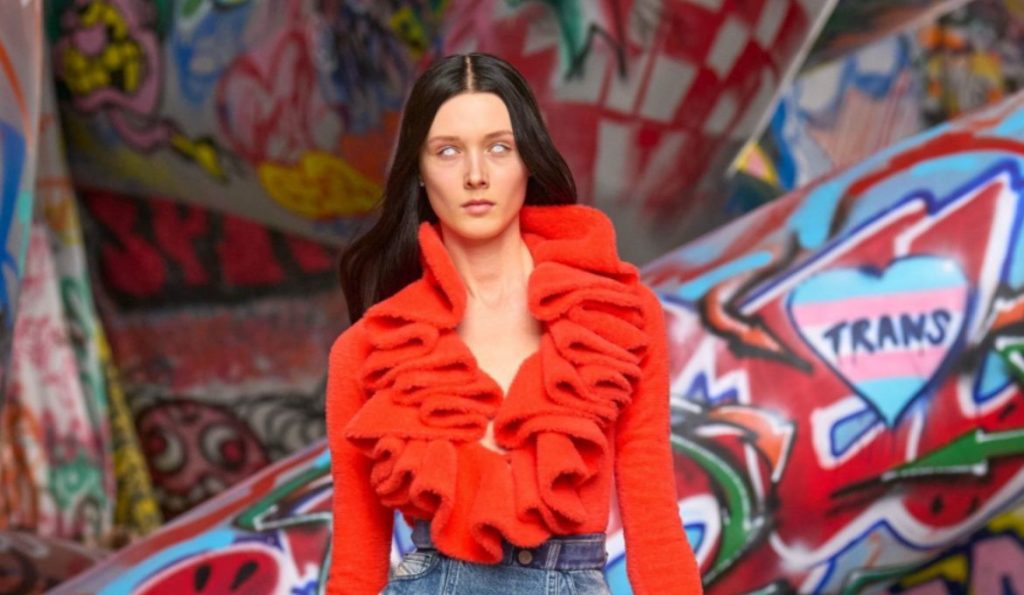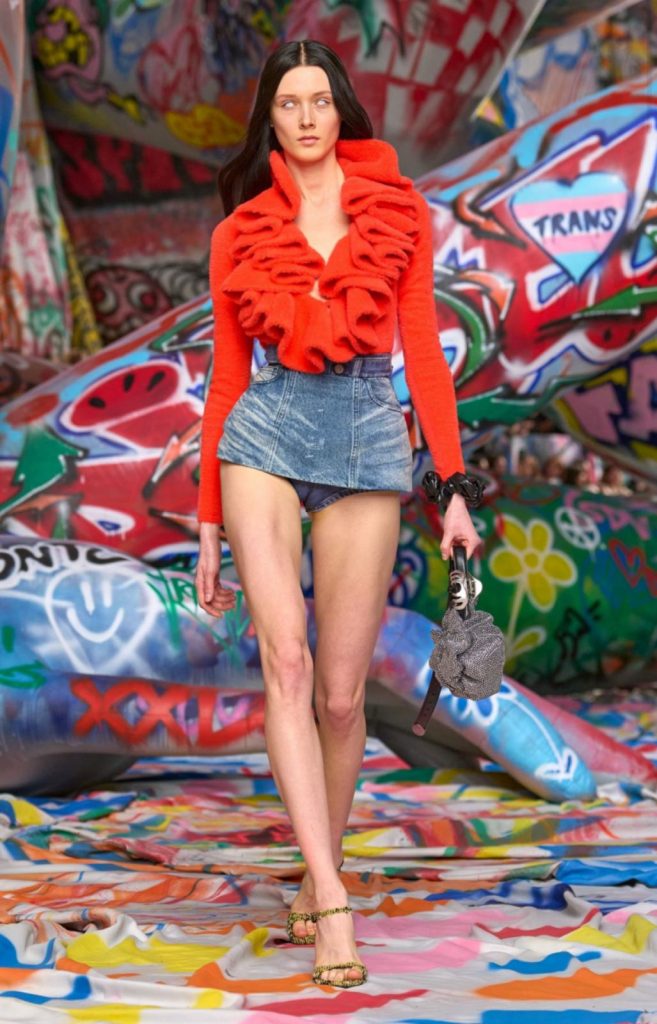Skywriting or Street Sermon? Diesel’s World-Record Graffiti Catwalk and the Politics of Public Art

When fashion becomes a public artwork, the runway stops being a place you watch and becomes a place you witness. Diesel’s Fall/Winter 2025 show did exactly that: it turned Milan’s catwalk into the largest graffiti canvas ever assembled — a three-kilometre, spray-scrawled, inflatable stage painted by thousands of artists — and in doing so it reframed what a fashion show can be: civic theatre, global collaboration, and billboard-size protest rolled into one.
⸻
The Spectacle in One Breath
On a cold Milan evening, Diesel’s venue looked less like a catwalk and more like a reclaimed parkour course for paint. Under creative director Glenn Martens, the house unfurled 3.2 kilometres of fabric entirely covered in graffiti, the product of participatory activations across eight countries and the work of roughly 7,000 artists — both professionals and amateurs. Inflatable sculptures, themselves previously Guinness-recorded, rose from the floor like urban islands wrapped in the new mural, and models walked through a riot of tags, characters, and bursts of colour while wearing denim reworked into futuristic, often purposely shredded silhouettes.

